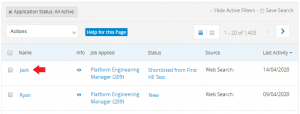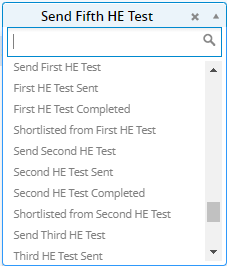The intern hiring season (beginning in February) usually serves as a breath of fresh air, and offers an undisturbed, fresh talent pool for companies. Throwing a full-fledged spanner in the works, however, last year’s pandemic led to nation-wide lockdowns, and shuttered campuses and offices. Hiring for interns on Glassdoor for April 2020 fell as much as 39% when compared to April 2019.With the inevitable shift to remote work, virtual or remote internships started coming into the spotlight. With a wider talent pool to pick from, recruiters have had their work cut out for them to make good hires.
In post-pandemic 2021, the one word defining any practice is reinvention. The same is also true of tech recruiters who, whether hiring for interns or full-time employees, need to transform their practices, right from the grassroots level.
They have to ask themselves, are remote internships a new fad or are they here to stay?

What do we think?
At HackerEarth, reinvention is second nature to us. We aim to stay ahead of the curve and constantly change the way we address our talent needs, right from sourcing to onboarding. We decided to assess where we currently stand on remote hiring for interns and how best to take it forward this year.
My conversations with Sachin Gupta, our CEO, Vishwastam Shukla, CTO, and Murali Krishna, HackerEarth’s Senior HR Generalist, brought to fore some insightful strategies that everyone can benefit from when hiring and onboarding interns this year. Read on!
#1 How has HackerEarth transformed the entire process of hiring and onboarding post-COVID?
In Sachin’s words, “Interviewing and in a lot of cases, even screening, was done manually before COVID-19. The pandemic has forced everyone to move to a virtual recruiting process. This has had a huge impact on campus recruiting and face-to-face interviews.
HackerEarth has been instrumental in helping companies adapt their recruiting processes to a completely virtual set up. The take-home assessments can be used for screening candidates in both campuses as well as lateral hiring and FaceCode makes it super simple to have pair programming interviews.”
#2 When you think about remote onboarding, how much of it is purely digital? Is there still a need for the “human element” to be present? If yes, how can recruiters ensure that personal touch is brought to the table, virtually?
“Personally, there is always a need for “human element” in onboarding. While a lot of functional aspects of onboarding interns can be covered digitally through pre-recorded videos and self-serve portals, they can only do so much. A human touch to it can make the employees feel a lot more welcome and integrated.
A simple way is to ensure there are regular check-ins about work and casual interactions about everything else by the key stakeholders for every new employee. We, at HackerEarth, assign a buddy to each intern at the beginning of the onboarding process. A buddy helps ease them into their role and navigate uncharted waters. For the initial two weeks, every manager that interns would be working with takes some time and personally introduces themselves and their team,” says our CEO.

#3 How do you think HackerEarth has been able to provide an engaging, meaningful internship experience, all the while from a remote perspective?
Our CTO, Vishy being the expert in this area, answered this for us.
“Interns at HackerEarth were always entrusted with significant responsibilities. Continuing with this practice and asking interns to help with high impact projects has helped us engage with them at a deeper level right from the beginning.
The pandemic required us to do things a little differently to make sure that the interns felt like they belonged here. We assigned each intern with a buddy engineer who has always been available to guide them. Virtual mentorship has meant that managers and mentors double down their efforts towards mentees by defining crisp goals for them.”
#4 At the onset of the pandemic, and throughout the last year, companies’ hiring processes have undergone significant changes . What changes would you want to keep, and what part of the pre-COVID hiring process would you want to go back to?
“At HackerEarth, two big changes that we saw were a wider adoption of automated screening and an increased number of virtual video interviews . We believe both are likely to stay even if we go back to pre-COVID work environments. The ability to effectively screen candidates without a lot of manual intervention allows companies to widen their recruiting funnel without spending too much. This leads to a more diverse candidate pipeline and eventually a better talent pool.
Even in the case of interviews, it’s highly ineffective for people to conduct in-person interviews where the candidates have to write code on a white board or use pen/paper. Our intelligent tool, FaceCode allows interviewers conduct streamlined interviews and reduces discrimination or bias while making decisions,” shares Sachin.
SUBSCRIBE to the HackerEarth blog and enrich your monthly reading with our free e-newsletter – Fresh, insightful and awesome articles straight into your inbox from around the tech recruiting world!
#5 Companies are changing the way they usually hire and are looking at newer traits in 2021. What, in your opinion, does talent acquisition look like in the post-COVID phase?
Our CEO believes that the outlook towards recruiting has been significantly altered by the pandemic.
He says, “We are likely to see a lot more hybrid workspaces where people are working from office, working from homes and working remotely. Today, both candidates and companies will have a wider set of options at their disposal, which means that recruiters will have to dip into sourcing channels that were earlier not relevant to them.
It also means that they will be competing for the candidate’s mindshare against organizations that were previously not their competitors. Recruiters have to step up their game and provide the right candidate experience to attract the best talent from this diversified pool.
COVID has accelerated adoption of tools across segments and talent acquisition is no different. Recruiters should be proactively thinking about how they can be more efficient by using the right tools in their recruiting process. We will see increased adoption of tools that help automate various aspects of recruitment, without taking away the human touch from it.”
#6 What are some practices that you have used personally that you would suggest recruiters follow to ensure that new joinees feel like a part of the team, right from the start?
One of the most difficult things, according to Murali, that the team had to face when onboarding new joinees was making them understand our work culture.
“We overcame this by trying to create as much interaction as possible. We wanted to ensure that they were a part of conversations that had nothing to do with work. Holding fun-filled virtual activities also helped in making them get to know each other and engage comfortably with the existing team members.
We made sure that the new joinees had access to all the required tools and resources right from the get-go. Providing google drive access, which consisted of policies and documents related to HE, assigning a buddy to each new joinee and holding orientation sessions with every team, helps in making every new member feel like a part of the team.
Another thing that is specific to HackerEarth is our MyStory sessions. We aim to make every employee feel like they can be their complete self with no apologies or judgement. These sessions are a platform for our employees to share their personal experiences and stories and show them that we care. Not only about their work but also about their personal lives. We try to bring their personality out into the world and make them feel comfortable,” says Murali.

#7 A recent Forbes article listing predictions for hiring and recruitment in 2021 foreshadows an increased adoption of practices aimed at eliminating bias in the screening and hiring process. This being one of HackerEarth’s critical values, what do you think needs to be done to eliminate bias, wherever possible?
We posed this question to Sachin, and here’s what he had to say.
- “There needs to be a measurement framework in place that regularly tracks the diversity quotient of the recruiting process, metrics like ratio of diverse candidates, fallout from screening to interviews, and interviews to hire. This should allow companies to see how their diversity efforts are trending, and enable them to identify areas that are having a high negative impact on diversity.
- A lot of bias is unconscious so it’s important for people to understand where they can go wrong. Rigorous bias training for hiring managers and recruiters helps in identifying and controlling their biases.
- Remote interviewing tools are a great way of reducing bias in the recruiting process. They have options to mask unimportant PII from hiring managers, as well as the option of conducting a blind interview.
- Skill-based hiring processes ensure that hiring managers focus on skills and not on other traits that may not have any relevance to the job.
- Structured interviewing process enables recruiters to use pre-defined, standardized questions and evaluation parameters. This ensures that all candidates are assessed fairly and objectively. Post interview feedback should be recorded in real-time to avoid recency bias.”
Companies are plodding on and finding ways to make remote internships work, because internships serve as a test drive for employers to seal the deal with the new joinees. They are the most effective way that a recruiter or hiring manager can see the value that the interns bring to the table. According to research by the National Association of Colleges and Employers (NACE), nearly 68% of interns are offered full-time jobs.
Interns, there is light at the end of the pandemic tunnel! Stay equipped to intern virtually and better your chances of getting that job.
You can always write to us at contact@hackerearth.com to know more about how HackerEarth can help you with remote hiring.





































